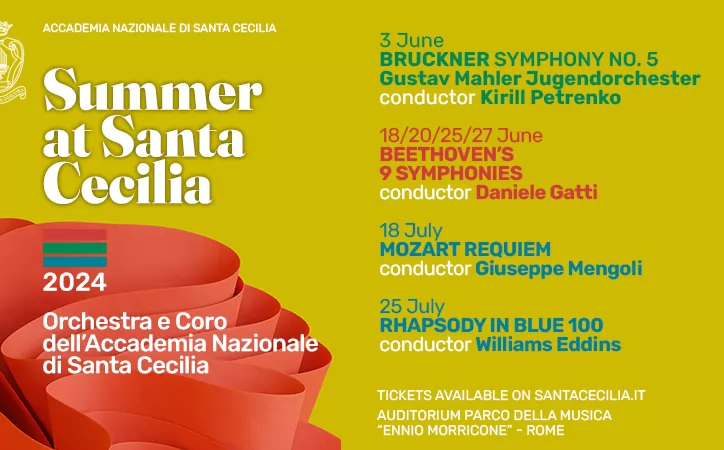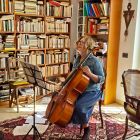Heritage. A new look at the Etruscans
The question of what came before the Romans is as irrelevant to some as to what occurred before time. however the Etruscan civilisation that pre-dates the Roman one contributes to what many either take for granted or erroneously attribute to the Romans. In fact even legendary gladiator fighting, considered the core of Imperial Roman entertainment, derived from an Etruscan funeral ritual.
The study of Etruscan archaeological sites and material culture is providing increasing insights into the people who gave Rome its earliest walls, first kings, the advanced drainage system of the Cloaca Maxima, nobility concepts and the arts of divination, banquet- ing, fresco painting and metal working. The National Etruscan Museum housed in Villa Giuliaand the Vatican Museums have recently invested in the display of their Etruscan collections, showing hundreds more artefacts excavated from pre-Roman tombs and urban settlements.
The expansion of the National Etruscan Museum into nearby Villa Poniatowski means that items previously in storage from Etruscan communities in Umbria (Terni, Todi, Gualdo Tadino and Nocera Umbra) and from south of Rome (lanuvio, Segni, Nemi and Palestrina) are now on display. This new exhibition space, presented to the public in January, is part of a programme that started with last year’s reorganisation of an entire wing in Villa Giulia dedicated to the prominent Etruscan cities of Vulci, Cerverti and Tarquinia.
Among the highlights of the main collection in the new wing of Villa Giulia are the golden tablets from the sanctuary of Pyrgi, discovered in 1964 in the coastal city of Santa Severa, 50 kms north of Rome. They contain the largest extant Etruscan inscriptionand contribute to today’s understanding of the language. Etruscan writing was phonetic and usually written from right to left. It remained obscure for centuries because important literary evidence was lost with the assimilation of Etruscan into Roman culture. By 100 AD the Romans had conquered most of the Etruscan cities, some dating back to the 10th century BC, and replaced their language with latin. With the discovery of the three golden tablets that record a dedication made in 500 BC by the King of Cerveteri to a Phoenician goddess – two inscribed in Etruscan and one in Phoenician – the mystery of the Etruscan language is easier to solve.
Despite the fact that the language died over 2,000 years ago, several words in English are believed to have derived from Etruscan, such as “autumn” from an Etruscan earth deity named Voltumna, as well as “person” from the Etruscan word for mask, phersu. Part of the new wing in Villa Giulia also contains tombs from the cities of Tarquinia and Cerveteri. The burial practices of the Etruscans are what dis- tinguish them most from their Greek and Roman counterparts, as their funeral architecture and rituals are closer to those of Egypt and the Orient.
The bronze Trono Barberini from Palestrina at Villa Poniatowski. The city of Tarquinia – home of two of the most prominent kings of early Rome – and its necropolis is located some 65 kms north of Rome. The city is now a UNESCO World heritage site comprising 6,000 underground tomb chambers and 200 fresco paintings dating from the 7th-2nd centuries BC. Thanks to the delicate instalment at Villa Giulia of the Tomb of the Funeral Couch (Tomba del letto Funebre), dating from 470 BC and discovered in 1873, visitors to the museum can view one of the finest and oldest frescoes in Italy, which had been painted onto the walls of an underground tomb chamber cut out of soft rock into a sloping hillside. Villa Giulia has also recreated a tomb from the city of Cerveteri, the largest necropolis in the Mediterranean, where burial grounds were made of mounds of earth and built on ground level to resemble a domestic dwelling.
The tomb resembles a sixth-century tumulus from the Bandidaccia necropolis, in which a male and female were buried together, as indicated by the interior carvings. Inside are personal items of the deceased, discovered inside the actual tomb in Cerveteri. The Vatican Museums have also enhanced their extensive Etruscan collec- tion, which is one of the most important in Europe. last year two new rooms were added to the existing 23 displaying artefacts such as bronze vessels and jewellery, engraved hand mirrors, pottery vases, cinerary urns and sarcophagi from the early Iron Age (ninth century BC) to the hellenistic period (second century AD).
The Vatican collection comes from the main Etruscan settlement area referred to as Etruria, corresponding roughly to modern-day Tuscany, extending from the Arno river valley and running through the cities of Pisa and Florence to the Tiber in Rome. Before the unification of Italy many of these sites were on papal territory, which explains how these Etruscan treasures ended up in the Vatican Museums. However, the Etruscan galleries are among the least visited and least well-known part of the Vatican’s collection, partly because they are not on the direct route to the Sistine Chapel. Nevertheless they are well worth a detour, not least because so few people visit the galleries. Villa Giulia is open from 08.30-19.30, Mon closed.
Visits to the new exhibition space in Villa Poniatowski are in groups of not more than 25 people on Tues, Wed and Thurs 10.00, 11.15 and 12.30. Guided tours of Villa Poniatowski may be booked on Fri, Sat and Sun 10.00, 11.15 and 12.30. www.villagiulia.beniculturali.it. The Etruscan Museum in the Vatican Museums should be accessible whenever the museums are open, however you may find that the galleries are closed in the afternoon because so few people visit them. The Vatican is lending some of the items in its collection for an exhibition in Asti, Piedmont, entitled Etruschi: l’ideale eroico e il vino lucentefrom 18 March to 15 July.
Theresa Potenza





















